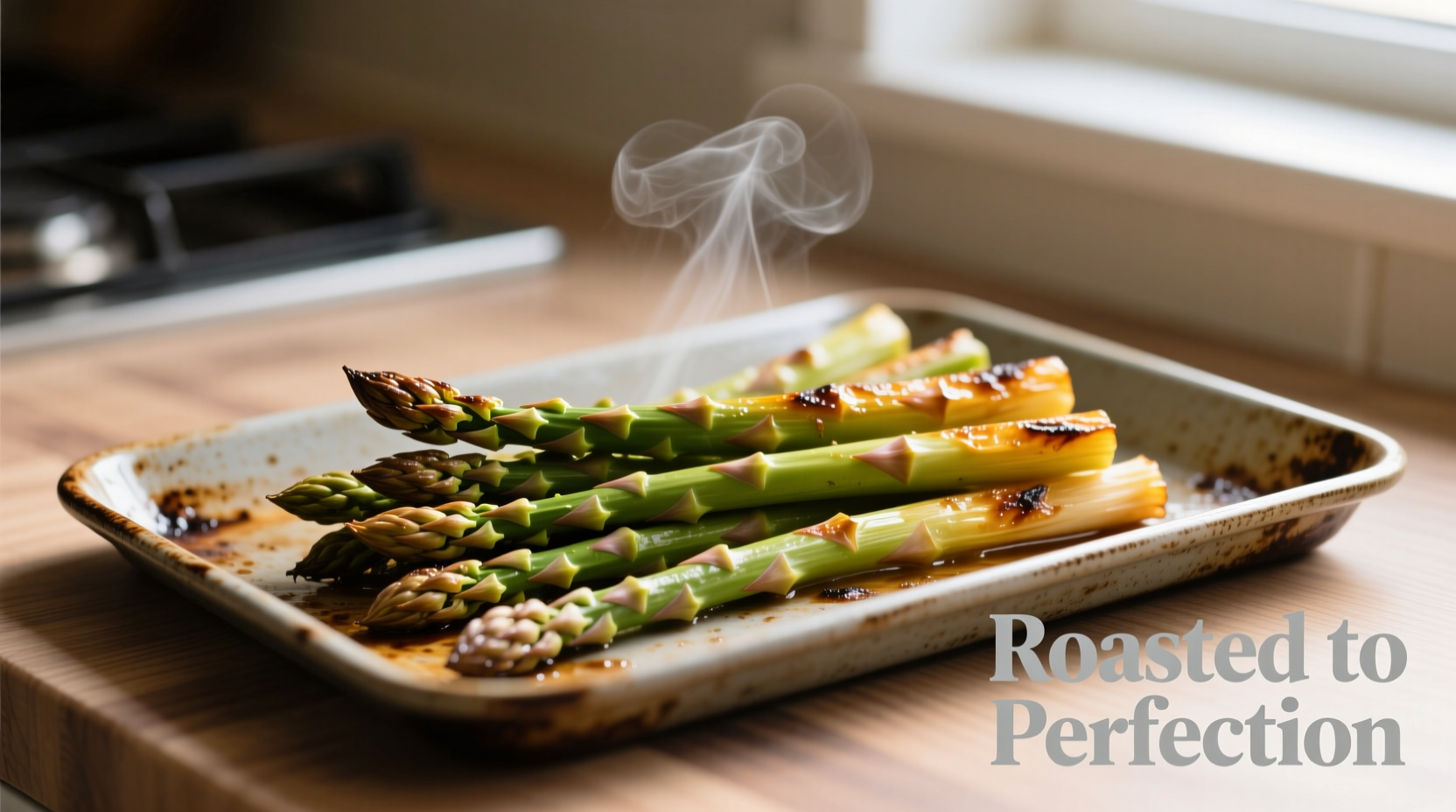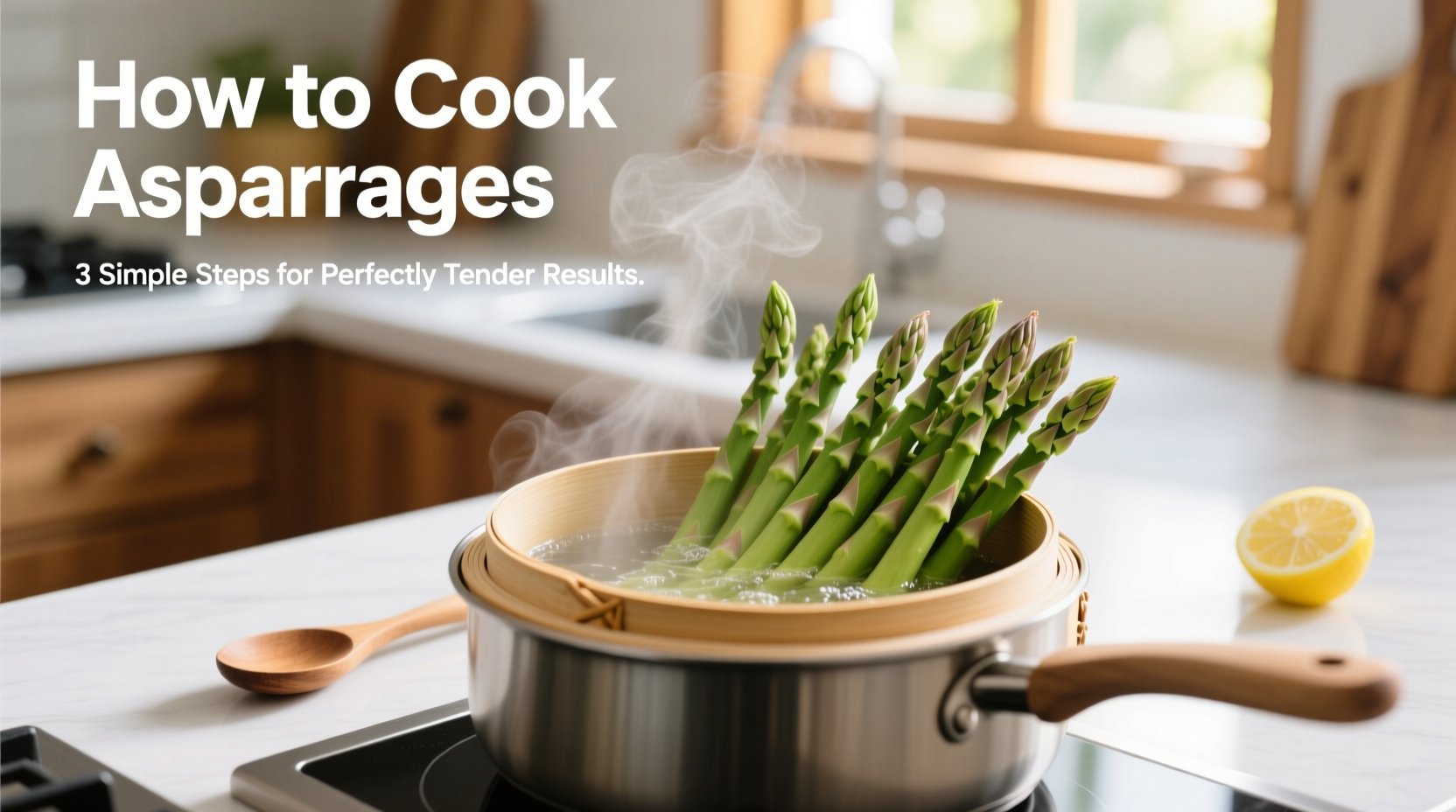Asparagus transforms from fibrous stalks to a delicate, flavorful vegetable when prepared correctly. This comprehensive guide reveals professional techniques that ensure perfect results every time, whether you're a beginner or looking to refine your skills. We'll cover selection, preparation, multiple cooking methods, and expert seasoning tips that elevate this spring vegetable from ordinary to extraordinary.
Selecting and Storing Fresh Asparagus
Quality asparagus starts with proper selection. Look for firm, straight spears with tightly closed tips and vibrant green color. Thicker spears (pencil-width or larger) work best for roasting and grilling, while thinner varieties excel with steaming or sautéing. Avoid wilted stalks, dry ends, or open, flowering tips which indicate age.
Store asparagus upright in your refrigerator like flowers, with ends in about an inch of water and covered loosely with a plastic bag. Properly stored, fresh asparagus maintains quality for 3-5 days. For longer storage, blanch spears for 60 seconds in boiling water, then plunge into ice water before freezing in airtight containers.
Preparing Asparagus for Cooking
Preparation significantly impacts texture and eating experience. The woody ends require removal, but the traditional "snap" method wastes edible portions. Instead, lay spears flat and gently bend from the bottom until they naturally break at the transition point between tough and tender. Alternatively, use a vegetable peeler to remove the tough outer layer from the bottom third of thicker spears.
Wash asparagus under cool running water just before cooking, using your fingers to remove any grit between the tips. Pat dry thoroughly before cooking, as excess moisture prevents proper browning during high-heat methods.
Asparagus Cooking Methods Compared
| Cooking Method | Time | Temperature | Best Results | Nutrient Retention |
|---|---|---|---|---|
| Roasting | 12-15 min | 400°F (204°C) | Caramelized edges, tender-crisp texture | High (minimal water contact) |
| Grilling | 8-10 min | Medium-high heat | Charred flavor, smoky aroma | High |
| Steaming | 5-7 min | Boiling water | Delicate texture, bright color | Moderate (some water-soluble nutrients lost) |
| Sautéing | 6-8 min | Medium-high heat | Even browning, restaurant-style finish | High |
| Blanching | 3-4 min | Boiling water | Perfect for salads or freezing | Lowest (significant nutrient leaching) |
This comparison reveals why dry-heat methods like roasting and grilling preserve more nutrients than water-based techniques. According to USDA FoodData Central, asparagus cooked with minimal water contact retains up to 30% more vitamin C and folate compared to boiling methods. The University of Minnesota Extension confirms that high-heat, short-duration cooking preserves the maximum nutritional profile while developing complex flavor compounds through the Maillard reaction.
Step-by-Step Roasting Technique
Roasting delivers consistently excellent results with minimal effort. Preheat your oven to 400°F (204°C) and line a baking sheet with parchment paper. Toss prepared asparagus with 1-2 tablespoons of olive oil, ensuring even coating without excess. Season with sea salt and freshly cracked black pepper.
Arrange spears in a single layer without crowding. Roast for 12-15 minutes, rotating the pan halfway through cooking. Thicker spears may require 15-18 minutes, while thinner varieties need only 10-12 minutes. Perfectly roasted asparagus should be tender when pierced with a fork but still offer slight resistance, with browned edges and vibrant green color.
Professional Grilling Method
Grilling imparts a distinctive smoky flavor that complements asparagus beautifully. Preheat your grill to medium-high (approximately 375-400°F). Toss prepared spears with olive oil, salt, and pepper. For easier handling, use a grill basket or place spears perpendicular to the grates.
Cook for 8-10 minutes, turning occasionally with tongs until tender-crisp with attractive grill marks. Asparagus is done when it can be easily pierced with a fork but maintains its shape. For food safety, ensure internal temperature reaches at least 135°F (57°C), as recommended by FoodSafety.gov for vegetable side dishes.
Steaming and Sautéing Techniques
For delicate preparations, steaming works well. Bring 1 inch of water to a boil in a pot fitted with a steamer basket. Arrange asparagus upright if possible, cover, and steam for 5-7 minutes until tender-crisp. Immediately transfer to an ice bath if using in cold preparations.
Sautéing creates restaurant-quality results. Heat 1 tablespoon olive oil in a large skillet over medium-high heat. Add asparagus in a single layer and cook undisturbed for 3 minutes to develop color. Toss and continue cooking 3-5 minutes more until tender-crisp. Finish with a squeeze of lemon juice for brightness.

Seasoning and Serving Suggestions
Elevate your asparagus with complementary flavors. Classic pairings include lemon zest, toasted almonds, parmesan cheese, and hollandaise sauce. For Mediterranean flair, add minced garlic during the last two minutes of cooking and finish with fresh herbs like dill or tarragon.
Asparagus shines as both a side dish and main component. Try it in frittatas, pasta dishes, or as a topping for grain bowls. For a complete spring meal, pair roasted asparagus with lemon-herb chicken and quinoa. The natural sweetness of properly cooked asparagus balances beautifully with acidic components like balsamic vinegar or citrus.
Common Asparagus Mistakes to Avoid
Even experienced cooks make these asparagus errors. Overcrowding the pan or baking sheet creates steam instead of browning. Using insufficient heat prevents proper caramelization. Cooking asparagus until completely soft destroys its delicate texture and flavor.
Another frequent mistake is improper seasoning timing. Salt draws out moisture, so add it just before cooking rather than during preparation. When using high-heat methods, avoid adding acidic ingredients like lemon juice until the final minute to prevent premature softening.
Storage and Reheating Guidelines
Cooked asparagus maintains quality for 3-4 days when stored in an airtight container in the refrigerator. For best results when reheating, spread spears in a single layer on a baking sheet and warm in a 350°F oven for 5-7 minutes. Microwaving often results in uneven heating and soggy texture.
For meal prep, blanch asparagus for 60 seconds, cool in ice water, then store in the refrigerator for up to 3 days. This partially cooked state allows for quick finishing before serving while maintaining optimal texture.
Frequently Asked Questions
How do I prevent asparagus from becoming soggy when cooking?
Prevent sogginess by ensuring asparagus is thoroughly dry before cooking, using high heat methods like roasting or grilling, and avoiding overcrowding in the pan. For water-based methods, minimize cooking time and immediately transfer to an ice bath if not serving immediately. The key is creating conditions that promote evaporation rather than steaming.
What's the best oil for high-heat asparagus cooking methods?
For roasting or grilling asparagus at high temperatures (400°F+), use oils with high smoke points like avocado oil, refined olive oil, or grapeseed oil. These maintain stability at high heat without burning, unlike extra virgin olive oil which begins to smoke around 375°F. A light coating (1-2 tablespoons per pound) is sufficient for even browning without greasiness.
How can I tell when asparagus is perfectly cooked?
Perfectly cooked asparagus should be tender-crisp—easily pierced with a fork but still offering slight resistance. The color remains vibrant green (not dull or olive-toned), and thicker spears may show slight blistering on edges. When bent gently, it should yield but not break completely. Overcooked asparagus becomes uniformly soft, loses its bright color, and develops a mushy texture.
Can I eat asparagus raw?
Yes, young, thin asparagus spears can be eaten raw when thinly sliced or shaved. Raw asparagus has a crisp, slightly grassy flavor and provides maximum nutrient retention. For best results, use a vegetable peeler to create ribbons from the thickest part, then massage with lemon juice and olive oil to tenderize. Raw asparagus works well in salads, but thicker spears benefit from brief blanching to improve digestibility.
Why does my urine smell after eating asparagus?
This phenomenon, experienced by about 40% of the population, results from metabolizing asparagusic acid found in asparagus. The body breaks this compound into volatile sulfur-containing molecules that create a distinctive odor. The ability to produce and detect this smell is genetically determined. Despite the odor, this reaction is completely harmless and indicates proper digestion of the vegetable's nutrients.











 浙公网安备
33010002000092号
浙公网安备
33010002000092号 浙B2-20120091-4
浙B2-20120091-4